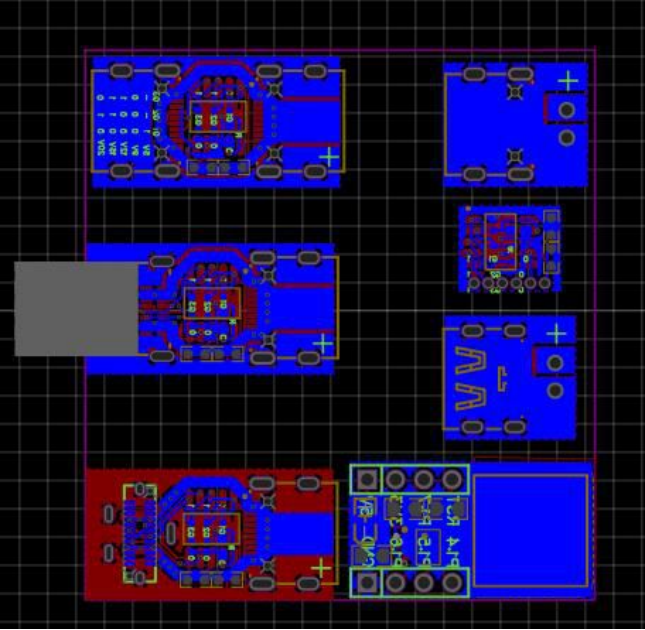
If you're interested in building a DIY power spoofing device, this article might be worth a look.
For those who own a Lenovo E450 with a square power connector but want to avoid carrying around a mess of cables when on the go, especially since some 65W GaN chargers with a single Type-C port might not recognize the device, this guide could help you make your own spoofing adapter.
The PD protocol uses an off-the-shelf IC, the CH224K, which has been tested and performs well. The general circuit layout is straightforward. You'll also need to include the smallest system based on the 552. Without a specific circuit diagram, you can directly design a PCB. In the top-left corner of the design, there are two connectors: one female-to-female connector with solder pads on one end for wiring and one male-to-female connector that plugs directly into the power source.
The IC itself is simple to use. It requires just two resistors (you'll also need a VDD-to-ground capacitor, so don't forget to add that to your schematic). The solder pads on the back can adjust the voltage via resistors or jumpers. If left unconnected, the default output is 20V.



For a one-time-use device, the epoxy resin encapsulation works well. In practical tests, the resistance between the power supply's middle terminal and ground is around 280 ohms, and you'll need to connect two resistors in series.

For the casing, you can start by filling the Type-C and square connector ports with 705 silicone sealant, then add epoxy resin. Once the resin sets, you can sand and polish the mold, followed by cleaning off the 705.




If you're unfamiliar with the PD protocol, in most cases, PD only requires CC1. The D+ and D- connections are there to ensure QC compatibility. In testing, both PD and QC protocols are supported. Set the output to 20V, and if your GaN charger supports 20V, the device will spoof it to output 20V. For other power supplies or car chargers with PD and QC, the maximum supported voltage might only be 12V, and the actual spoofed output will also be 12V.
If you encounter a situation where a data cable connected to a GaN charger and the spoofing adapter successfully outputs 20V, and the same setup with the T480's original Type-C charger also outputs 20V, but directly connecting the data cable and GaN charger to the T480 has no response, it's likely because the T480's charging protocol doesn't support PPS. Newer GaN chargers come with PPS, which might explain the issue. You could try switching to a different Type-C cable. Some cables have high resistance, which can prevent fast charging from being triggered.
Done!




